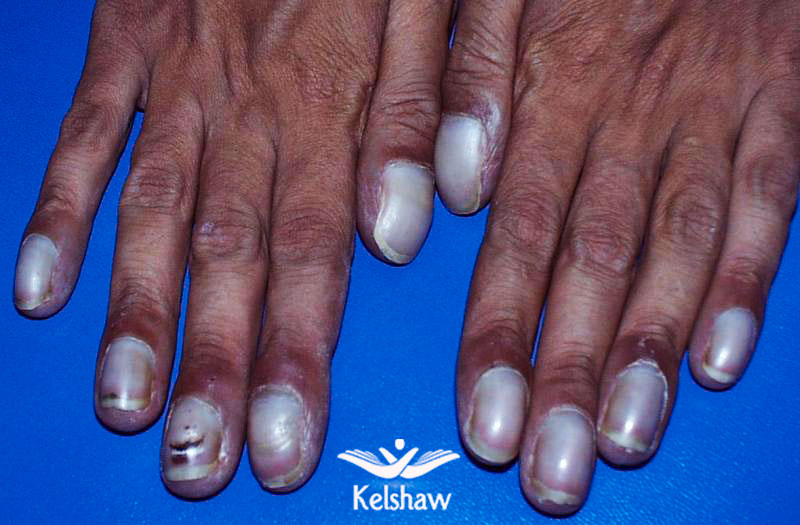
What is Cyanosis?
What is Cyanosis?
Cyanosis is a blueish/purple tinge to the skin caused by tissues receiving a poor supply of oxygen.
Cyanosis can be either central or peripheral. Central cyanosis is caused by arterial hypoxia − the blood leaving the heart is poorly oxygenated. This is a late sign in trauma but can also be caused, for example, by congenital heart defects or lung failure.
Peripheral cyanosis is due to the reduction of blood flow in the peripheral circulation due to vasoconstriction caused by cold or shock, leaving the heart normally perfused. Peripheral cyanosis is found in the extremities (hands and feet). The picture in this post shows an example of peripheral cyanosis.
An absence of cyanosis does not indicate that the patient is not hypoxic − low light levels and some artificial lights can make cyanosis hard to detect. A pulse oximeter can be used to assess the whether a patient is hypoxic or not.
Cyanosis may be apparent on your approach and assessment of the patient and can be caused by a number of medical emergencies. It is important for first aiders to be able to spot cyanosis and hand over this information to emergency medical staff.
Want to learn more about first aid? Sign up to one of our free online training classes today!








0 Comments